Deer hunting in the United States is a time-honored tradition, with over 11 million hunters participating annually. This $25 billion industry thrives on precision and skill, but even the most experienced hunters know that having the right gear can make all the difference.
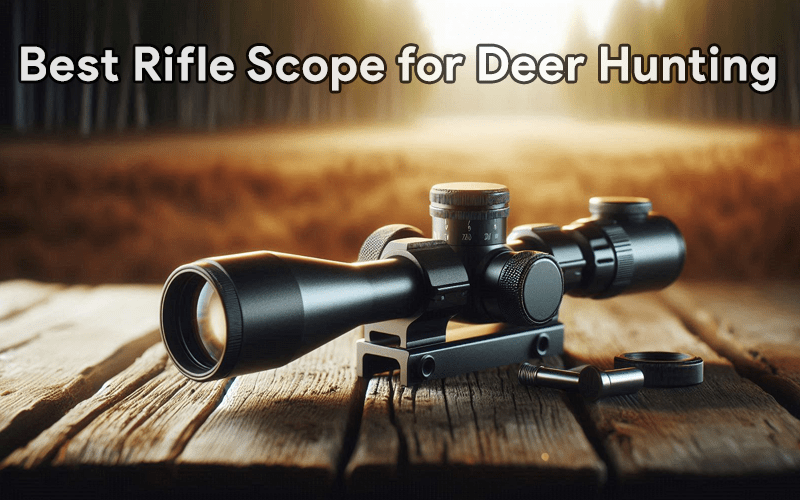
A high-quality deer hunting rifle scope is essential for increasing accuracy, especially in low-light conditions or when targeting at a distance. With the latest advancements in optics, 2025 offers some of the best options for hunters looking to upgrade their gear.
In this guide, we’ll explore the top deer hunting rifle scopes available, ensuring you have the perfect scope to improve your success in the field this seaso
Overview Of 6 Best Rifle Scopes for Deer Hunting
1. Vortex Optics 3-9×50 Crossfire II Deer Hunting Riflescope
Best Overall
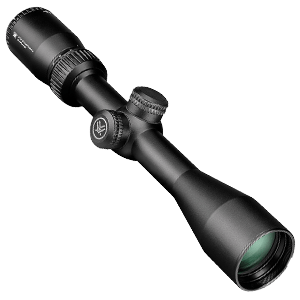
⚙ Main Specifications
- Magnification: 3-9x
- Objective Lens Diameter: 50 mm
- Eye Relief: 3.8 inches
- Field of View: 32-12.9 feet @ 100 yards
- Tube Size: 1 inch
- Adjustment Graduation: 1/4 MOA
- Max Elevation/Windage Adjustment: 60 MOA
- Parallax Setting: 100 yards
2. CVLIFE 3-9×40 Optics R4 Reticle Crosshair Rifle Scope For Deer Hunting
With Scope Mounts
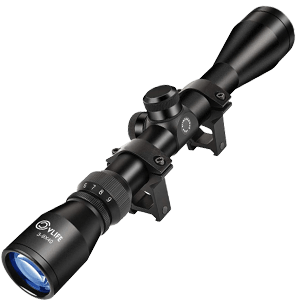
⚙ Main Specifications
- Magnification: 3-9x
- Objective Lens Diameter: 40 mm
- Eye Relief: 3.5 inches
- Click Value: 1/4 MOA @ 100 yds
- Field of View: 25′ – 14′ @ 100 yds
- Tube Size: 1 inch
- Exit Pupil: 0.2 – 0.67 inches
- Length: 12.20 inches
3. Vortex Optics Sonora 4-12×44 Second Focal Plane Riflescope
My Favorite Scope
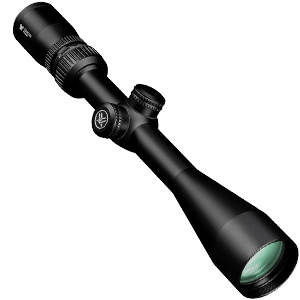
⚙ Main Specifications
- Magnification: 4-12x
- Objective Lens Diameter: 44 mm
- Eye Relief: 4 inches
- Field of View: 24.7-8.4 feet @ 100 yards
- Tube Size: 1 inch
- Adjustment Click: 1/4 MOA
- Windage Adjustment: 60 MOA
- Parallax Setting: 100 yards
4. CVLIFE Rifle Scope 6-24×50 AO Red and Green Illuminated Long Range Scope for Deer Hunting
Best Overall
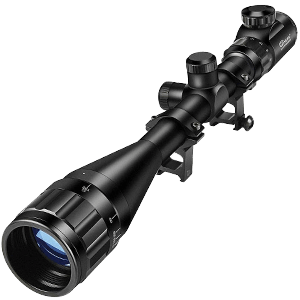
⚙ Main Specifications
- Magnification: 6-24x
- Objective Diameter: 50 mm
- Eye Relief: 3.52 inches
- Field of View: 28 feet @ 100 yards
- Click Value: 1/8 inch @ 100 yards
- Tube Size: 1 inch
- Exit Pupil: 5.1-16.9 mm
- Length: 17 inches
5. UUQ 3-9×40 Rifle Scope with Red/Green Illumination
Cheapest One
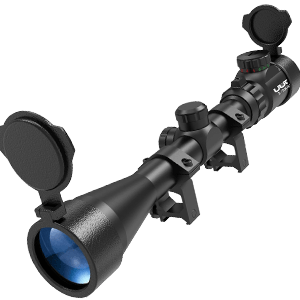
⚙ Main Specifications
- Magnification: 3-9x
- Objective Lens Diameter: 40 mm
- Eye Relief: 3.5 inches
- Field of View: 13.41-40.38 feet @ 100 yards
- Tube Size: 1 inch
- Length: 12.3 inches
6. Sig Sauer Buckmasters Tactical For Deer Hunting Shooting
Value For Money
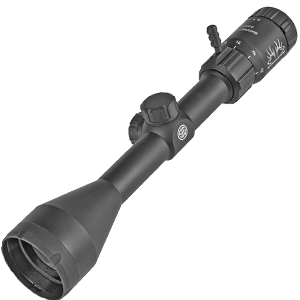
⚙ Main Specifications
- Magnification: 3-9x
- Objective Diameter: 50 mm
- Eye Relief: 3.5 inches
- Field of View: 13.41-40.38 feet @ 100 yards
- Tube Size: 1 inch
- Length: 12.5 inches
- Weight: 15 ounces
7. Bushnell Banner 3-9x40mm Riflescope For Deer Hunting
Outstanding Clarity
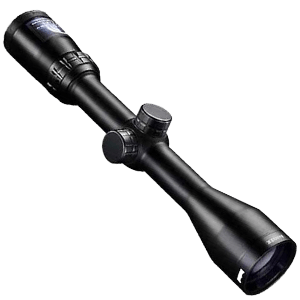
⚙ Main Specifications
- Magnification: 3-9x
- Objective Diameter: 40 mm
- Eye Relief: 6 inches
- Field of View: 40-13 feet @ 100 yards
- Tube Size: 1 inch
- Length: 12 inches
- Weight: 13 ounces
Related Post:- Field Dressing Kit For Hunting
Related Post:- Hunting Safety Harness For Tree Stand
What is Rifle Scope?
A rifle scope for deer hunting is an optical device mounted on a hunting rifle that helps hunters accurately aim at their target over long distances. It magnifies the view of the target, making it easier to spot and aim at deer, especially in challenging conditions like low light or at extended ranges. These scopes usually come with adjustable features like magnification, reticles (crosshairs), and turrets for windage and elevation adjustments, allowing for more precise shots.
In essence, a deer hunting rifle scope enhances accuracy, enabling hunters to make clean, ethical shots, improving their overall hunting success.
Type of Rifle Scope Used For Hunting
There are several types of rifle scopes used for deer hunting, each suited for different conditions and preferences. Here are the main types:
1. Fixed Power Scope
- Description: Offers a single, fixed magnification level (e.g., 4x or 6x).
- Advantages: Simple to use, durable, and often more affordable. Less to adjust in the field.
- Best For: Beginners or those hunting in consistent, short to mid-range distances.
2. Variable Power Scope
- Description: Allows the user to adjust the magnification range (e.g., 3-9x or 4-12x).
- Advantages: Versatile, making it suitable for various hunting conditions, from short-range to long-range shots.
- Best For: Hunters who need flexibility in different terrains or changing hunting situations.
3. Long-Range Scope
- Description: Built for accuracy at extended distances (often with higher magnifications like 5-20x).
- Advantages: Ideal for long-range hunting where precise targeting is crucial.
- Best For: Open terrain hunters who need to shoot deer from several hundred yards away.
4. Night Vision Scope
- Description: Equipped with night vision technology to allow visibility in low or no light conditions.
- Advantages: Perfect for hunting in darkness or twilight hours.
- Best For: Night or early morning hunters who need to track deer in poor light conditions.
5. Red Dot Scope
- Description: Uses an illuminated dot or reticle instead of traditional crosshairs.
- Advantages: Fast target acquisition, often used for close-range shooting.
- Best For: Hunters needing quick, accurate shots at close range, especially in thick brush.
6. Thermal Scope
- Description: Detects heat signatures from animals rather than relying on visible light.
- Advantages: Ideal for spotting deer in complete darkness or when obscured by foliage.
- Best For: Hunters looking for game in dense woods or in nighttime conditions.
7. BDC (Bullet Drop Compensator) Scope
- Description: Has reticles designed to compensate for bullet drop over distance.
- Advantages: Helps adjust for trajectory, making long-distance shooting more accurate.
- Best For: Long-range deer hunters who need to account for bullet drop.
Why Choosing the Right Rifle Scope Matters?
Choosing the right deer hunting rifle scope is essential for accuracy, adaptability to various environments, and comfort during the hunt. Here’s why it matters:
1. Accuracy and Precision
- A quality scope significantly improves accuracy, especially for long-range shots. Without a scope, accuracy drops by 50% beyond 150 yards.
- Variable-power scopes (e.g., 3-9x) help hunters zoom in on targets up to 300 yards or more, improving shot precision.
- Bullet Drop Compensation (BDC) reticles can adjust for bullet trajectory, especially for shots beyond 200 yards.
2. Adaptability to Environment
- Low-light scopes with larger objective lenses (e.g., 50mm) can improve light transmission by 20-30%, making them perfect for dawn or dusk hunts.
- Weatherproofing (waterproof and fog-proof) is crucial—hunters face rain or snow in about 30% of their outings, so a durable scope ensures consistent performance.
- A variable magnification scope (3-9x) offers flexibility, allowing hunters to switch between close-range and long-range shooting depending on the terrain.
3. Comfort and Ease of Use
- Scopes with 3-4 inches of eye relief help avoid recoil injuries from high-powered rifles.
- Lighter scopes, often made from durable materials like aluminum, weigh 25-50% less than older models, reducing fatigue during long hunts.
Key Features to Consider When Buying a Rifle Scope for Deer Hunting
As an experienced hunter, I know that choosing the right rifle scope for deer hunting can make or break your success in the field. There are several critical features to evaluate when picking a scope that will enhance accuracy, perform well in different environments, and be comfortable to use. Here’s what you need to consider:
1. Magnification Range
- Best Range: 3-9x or 4-12x
- Why It Matters: A variable magnification scope allows you to adjust for different hunting scenarios. At 3x magnification, you get a wider field of view for close-range shots in dense woods, while 9x or 12x helps you zoom in on targets several hundred yards away in open fields. Most hunters prefer the 3-9x range for versatility across different terrains.
2. Objective Lens Size
- Optimal Size: 40mm to 50mm
- Why It Matters: The size of the objective lens determines how much light enters the scope. A larger lens (50mm) captures more light, improving visibility in low-light conditions-perfect for dawn or dusk hunts. However, bigger lenses can add weight to your setup, so balance is key.
3. Reticle Type
- Most Popular Choices: Duplex, BDC (Bullet Drop Compensator)
- Why It Matters: A simple duplex reticle is ideal for quick target acquisition in close- to mid-range hunting, while a BDC reticle helps with long-range shooting by compensating for bullet drop, particularly useful for shots over 200 yards. The choice depends on whether you prioritize simplicity or long-range precision.
4. Eye Relief
- Ideal Distance: 3 to 4 inches
- Why It Matters: Eye relief is the distance your eye can be from the scope while still seeing the full image. For hunters using high-recoil rifles, such as those chambered in .308 or .30-06, longer eye relief (3-4 inches) is crucial to avoid “scope eye,” which can happen during a heavy recoil.
5. Lens Coating
- Recommended: Fully multi-coated lenses
- Why It Matters: Lens coatings enhance light transmission, reduce glare, and improve image clarity. Fully multi-coated lenses can increase light transmission by up to 95%, giving you a brighter, clearer sight picture even in poor lighting conditions.
6. Weather Resistance
- Must-Have: Waterproof, fog-proof, shockproof
- Why It Matters: You’ll face rain, snow, and humidity in the field. Look for scopes that are sealed with O-rings and filled with nitrogen or argon gas, which prevents moisture from fogging the lenses. Around 25-30% of hunts occur in less-than-ideal weather, so these features ensure your scope remains functional.
7. Adjustment Turrets (Windage and Elevation)
- Standard Adjustments: ¼ MOA or 0.1 MRAD
- Why It Matters: The ability to make precise adjustments for windage and elevation is critical for long-range shots. Most scopes offer ¼ MOA (Minute of Angle) increments, which allow for fine-tuning at 100 yards. MRAD (Milliradian) turrets, often used by military or long-range shooters, are another option but are less common for deer hunting.
8. Weight
- Typical Range: 12 to 20 ounces
- Why It Matters: The weight of the scope can impact the balance and ease of handling your rifle. Lighter scopes, typically 12-16 ounces, are ideal for long hunting trips or spot-and-stalk hunting where mobility is key. Heavier scopes (18-20 ounces) are often sturdier but can tire you out faster if you’re on the move.
9. Parallax Adjustment
- Best Feature for Long-Range: Adjustable Objective (AO) or Side Focus
- Why It Matters: Parallax occurs when the target and the reticle are not on the same focal plane, causing aiming errors at long ranges. A parallax adjustment allows you to correct this, ensuring the reticle stays aligned with your target. For shots over 150 yards, this is a must-have feature.
Conclusion
Choosing the right deer hunting rifle scope is more than just selecting an accessory it’s about improving your chances for a successful hunt. A quality scope enhances your accuracy, adapts to various hunting conditions, and ensures comfort throughout the hunt. By considering key factors like magnification range, objective lens size, reticle type, and weather resistance, you can tailor your equipment to fit your needs in the field. Remember, the right scope is an investment in better precision and overall hunting experience, ensuring you’re always ready for that perfect shot.
Leave a Reply